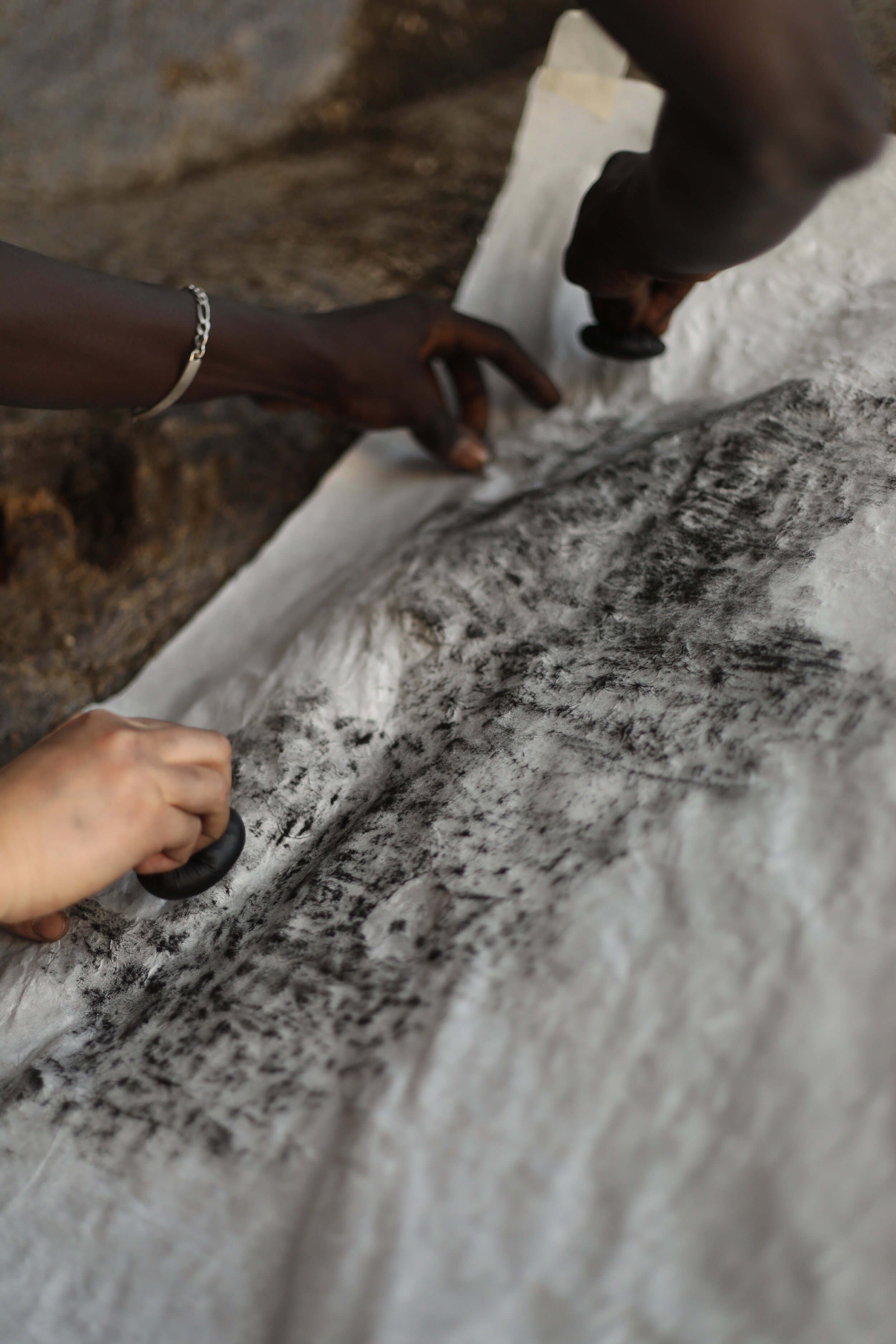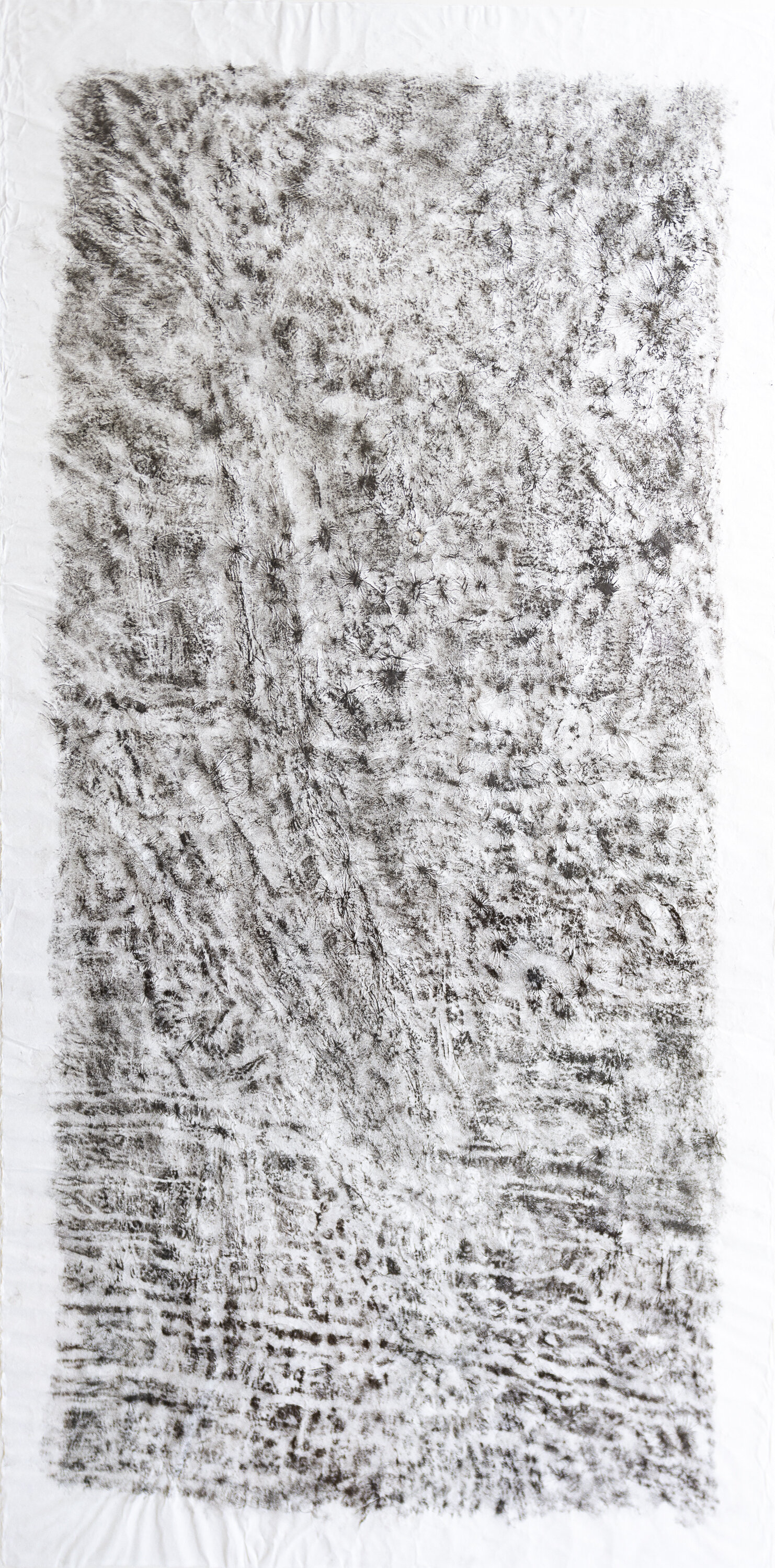Jeewi Lee, drape of wisdom
ABOUT Jeewi Lee
Jeewi Lee (*1987, Seoul) is a South Korean-German artist, based in Berlin. Her work predominantly deals with traces that question our visual perception. The trace bears witness to time while also reflecting its history and own production process. For Jeewi, it exists as residue of past lives, a visual allegory for lived experience, place, memory, and the body. The artist carries out intensive research on materials and their properties by transforming or combining them. This leads to her exploring the poetic context of the individual materials.
Jeewi studied painting at the Berlin University of the Arts (UDK) and at Hunter College University in New York. She graduated in 2014 with a master in fine arts at the UDK and since 2018 holds an MFA from the postgraduate program Art in Context. She has received various grants and scholarships including Villa Romana in Florenz, CAA Berlin and from Kunstfond Foundation. In 2020 she received artist residencies, such as Thread from the Josef & Anni Albers Foundation in Senegal and Al Ma’mal Foundation in Israel. Jeewi has exhibited in numerous group shows and solo exhibitions and was part of the Festival of Future Nows at the Neue Nationalgalerie (2014) and the Hamburger Bahnhof Museum (2017). Other exhibitions include Kunstverein in Hamburg and Korean Embassy Berlin in addition to institutional exhibitions such as Kunstmuseum Stuttgart (2020) and sculpture park Schlossgut Schwante (2020).






INterview
© Kaozen
When was your first time in Senegal and why ?
I always wanted to come to Senegal, but actually the first time was in February 2020. I came to participate on the Festival d‘Union in Tambacounda to realize an exhibition with other artist from Europe. After that, in march, I was a fellow at the artist residency Thread in Sinthian, which is a part of Le Corsa and Josef & Anni Albers Foundation.
Can you tell us more about your conception and approach as an artist ?
This question is never easy to answer in few sentences, but I am in general very interested in the leftovers of the past. Traces from the past, which can be memories, history and literally traces, being an evidence of an event and time.
How the idea of 'print' and especially 'print' of the baobab borned ?
I was very fascinated by the Senegalese landscape filled with Baobabs. Magical trees, carrying a lot of history and having different for diverse uses in the everyday-life in Senegal. When I did a research on them, and discovered that the oldest Baobab exists in the region of Fadial, I wanted to tell and listen to it‘s story, since I believe that old trees are living witnesses of the past.
Could you tell us about the technique and the process of creation ?
For this work and it‘s concept, that I want to hold this encounter, the visit to the oldest Baobab. I wanted to take a portrait of it or to conserve it‘s fingerprint. Since trees are like for me archives, which embodies the time and it‘s environment and actually trees grow differently depending on the climate, circumstances and environment, I decided to take imprints of the barks.
For this I got inspired by a traditional printing technique from Asia, which was used to copy graves stones or important engraved messages.
Same, about the Hanji paper your use, why this choice ?
Inspired by the technique, called Takbon in Korea, I used traditional Korean paper and ink okt of soot and animalglue.Hanji is a Korean handcrafted paper, made from paper mulberry tree. It is very thin but quite sustainable and flexible in it‘s matieré, thank to it‘s long fiber.
About what is talking the soap project ?
The soap project, called „residuum“ I collaborated with the woman soap association in Sinthian, Senegal. There are soaps made of groundnuts/ peanuts and telling the story about the relationship between groundnuts ans Senegal.
















